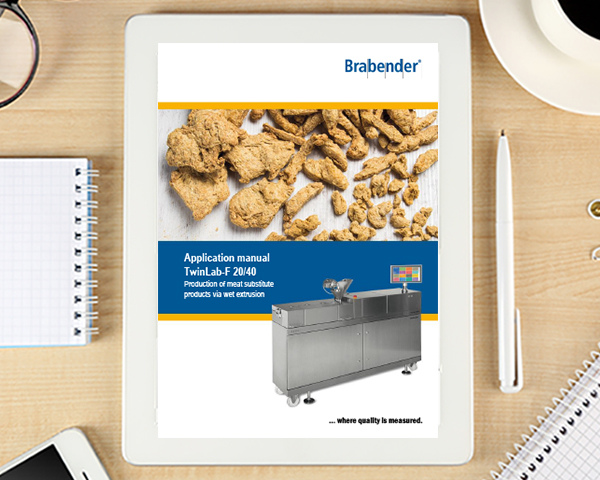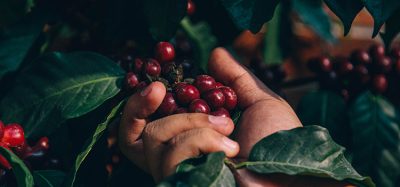Manual: Production of meat analogues through HME
- Like
- Digg
- Del
- Tumblr
- VKontakte
- Buffer
- Love This
- Odnoklassniki
- Meneame
- Blogger
- Amazon
- Yahoo Mail
- Gmail
- AOL
- Newsvine
- HackerNews
- Evernote
- MySpace
- Mail.ru
- Viadeo
- Line
- Comments
- Yummly
- SMS
- Viber
- Telegram
- Subscribe
- Skype
- Facebook Messenger
- Kakao
- LiveJournal
- Yammer
- Edgar
- Fintel
- Mix
- Instapaper
- Copy Link
Posted: 13 April 2021 | Brabender | No comments yet
This handbook shows how meat analogue products can be developed through a high moisture extrusion process using a Brabender twin-screw lab extruder.
Due to changes in consumer behaviour with regard to animal source foods and a constantly growing world population, the food industry is being challenged to offer alternative protein sources.
In Germany, for example, the number of people who do not eat meat or do without animal products altogether is continuously rising.
The reasons for these consumer groups include, on the one hand, health and ethical aspects, but also the accompanying environmental destruction and its consequences. In order to increase the range of meat replacement products on offer, the goal is to texturize vegetable proteins and thus give them a meat-like structure.
The extrusion of protein-containing raw materials such as soybeans and the use of extrusion technology have now made it possible to produce meat substitutes. The corresponding extrudates have a fibrous structure and/or texture, which corresponds to the texture of real meat. One possible subsequent processing method for the extrudates is shredding the products, adding additives such as spices and adhesives, and then pressing them together to make burger patties.
The TwinLab-F 20/40 D twin-screw extruder from Brabender can be used for the production and/or development of meat substitute products. It can be used to process raw materials such as protein sources from legumes and to achieve the desired product properties via e.g. texturing.
Related content from this organisation
Related topics
Food Safety, Free From, Health & Nutrition, Ingredients, Processing, Product Development, Quality analysis & quality control (QA/QC)








